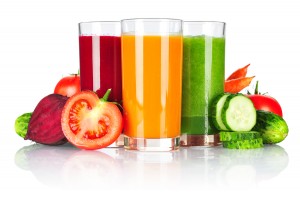 Smoothies are a great way to get extra fruits and vegetables into your diet without feeling the need to eat excessively. Though this is a great way to increase fruit and vegetable intake, it can be problematic to consume in winter months when you tend to be colder, and not really feel like having that morning smoothie. From a Traditional Chinese Medicine perspective, many of the ingredients that would be put in a smoothie, such as milk, raw fruits and vegetables, spinach, and various fruits, can also be cold or cool in nature, which contributes to overall feelings of chilliness (and ultimately not really wanting to have a smoothie in winter). As a result, this blog is intended to provide you with some examples of ingredients you can add into your smoothie during the winter months to help increase warmth or heat, and make your smoothie that much more enjoyable in winter.
Smoothies are a great way to get extra fruits and vegetables into your diet without feeling the need to eat excessively. Though this is a great way to increase fruit and vegetable intake, it can be problematic to consume in winter months when you tend to be colder, and not really feel like having that morning smoothie. From a Traditional Chinese Medicine perspective, many of the ingredients that would be put in a smoothie, such as milk, raw fruits and vegetables, spinach, and various fruits, can also be cold or cool in nature, which contributes to overall feelings of chilliness (and ultimately not really wanting to have a smoothie in winter). As a result, this blog is intended to provide you with some examples of ingredients you can add into your smoothie during the winter months to help increase warmth or heat, and make your smoothie that much more enjoyable in winter.
Spices
- Cinnamon – Hot/warm
- Ginger – Hot
- Nutmeg – warm
Fruits and Vegetables
- Cherries – warm
- Peaches – neutral/warm
- Pomegranate – warm
Nuts and Seeds
- Walnut – warm
Oils and Other
- Coconut oil – warm
- Cocoa – warm
- Vanilla – warm
- Honey – warm
Have you benefitted from reading this blog? Know someone that would benefit as well? Share, Like, Comment, or Tweet this article, and let me know what you think.
Some of the information provided above may not be appropriate for everyone, please consult with your doctor before trying any of the above. If you are interested in Naturopathic Medicine and wanting a different approach to your health care needs, please book an appointment with Elisha Cook at the RSNC (416-498-9763), and let me help you achieve your health goals.


